
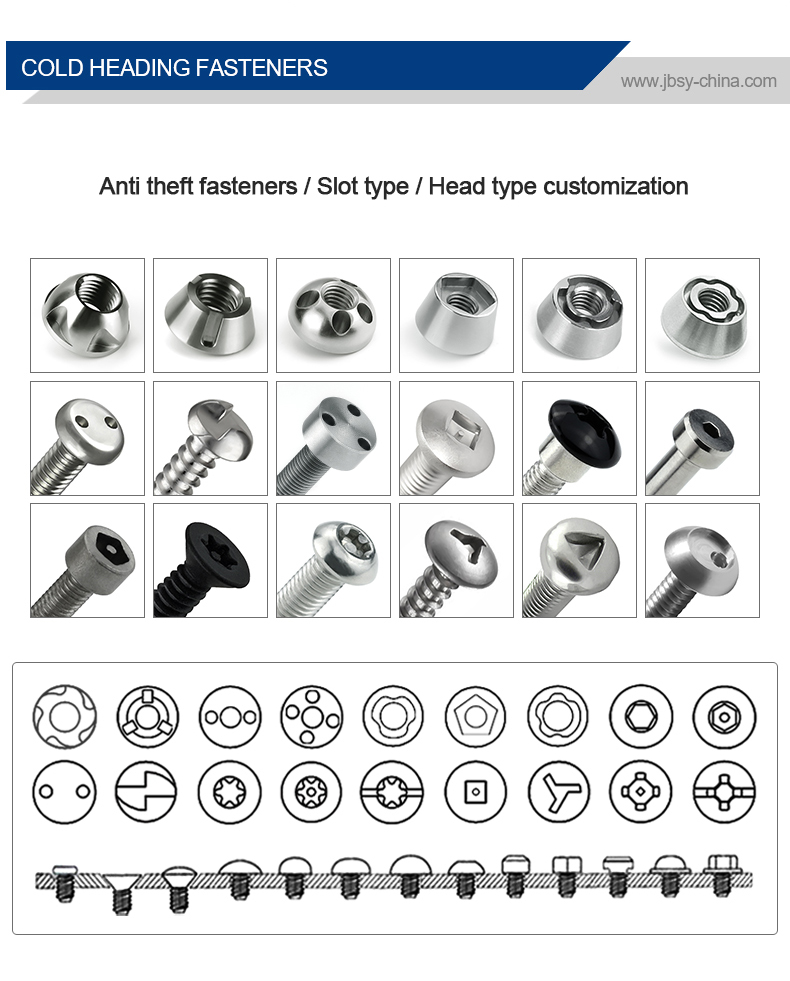
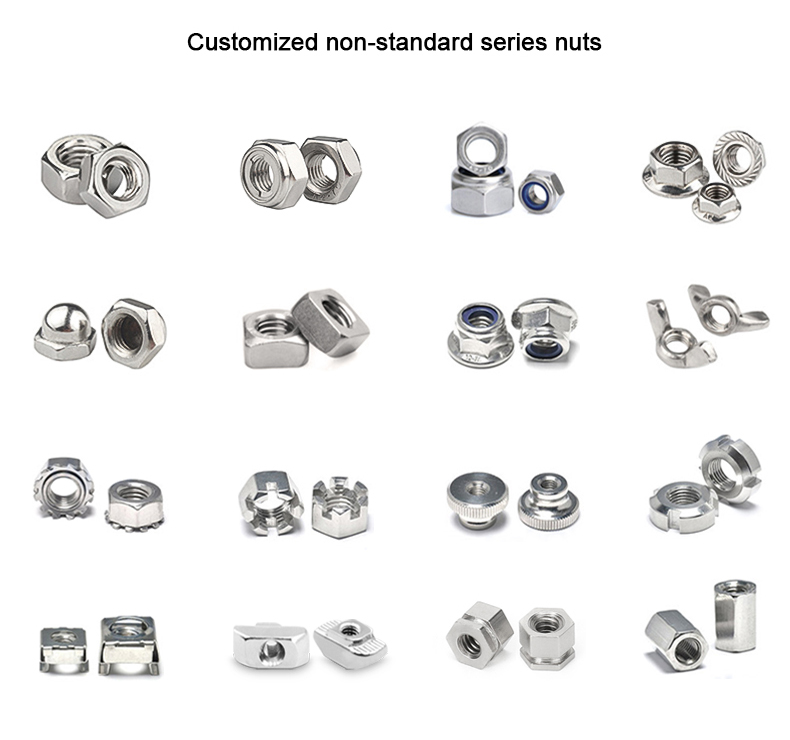
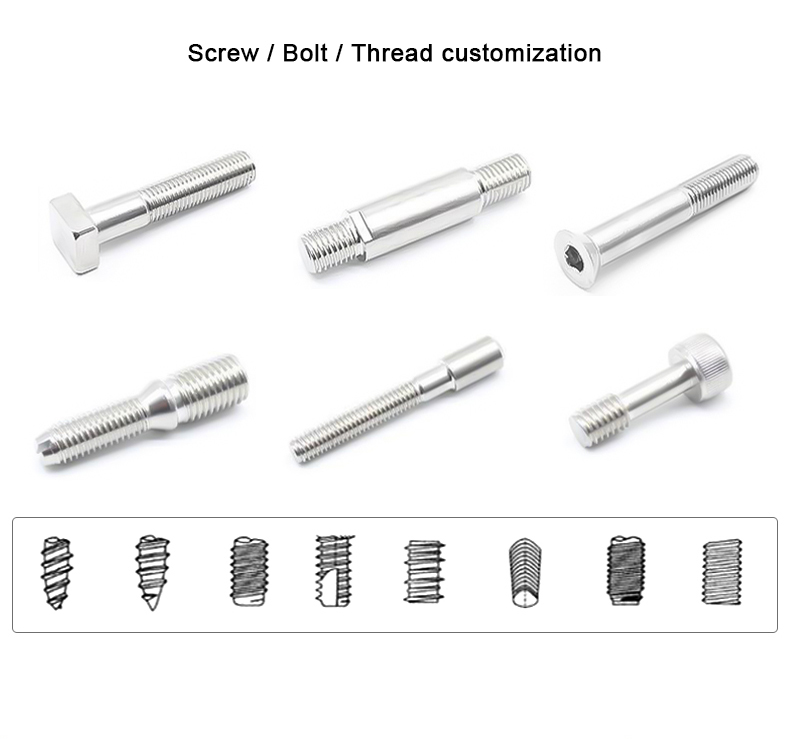
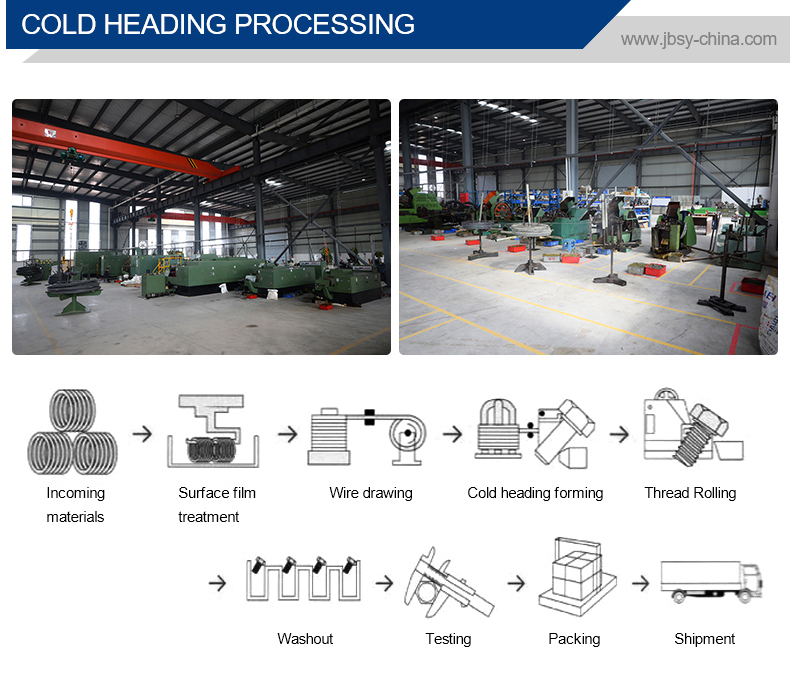
Cold heading process is one of the new processes for pressure machining of less or no cutting
metal. It is a processing method that utilizes the plastic deformation of metal under the action of
external forces, and with the aid of molds, redistributes and transfers the volume of metal to form
the required parts or blanks. The cold heading process is most suitable for producing standard
fasteners such as bolts, screws, nuts, rivets, and pins.etc
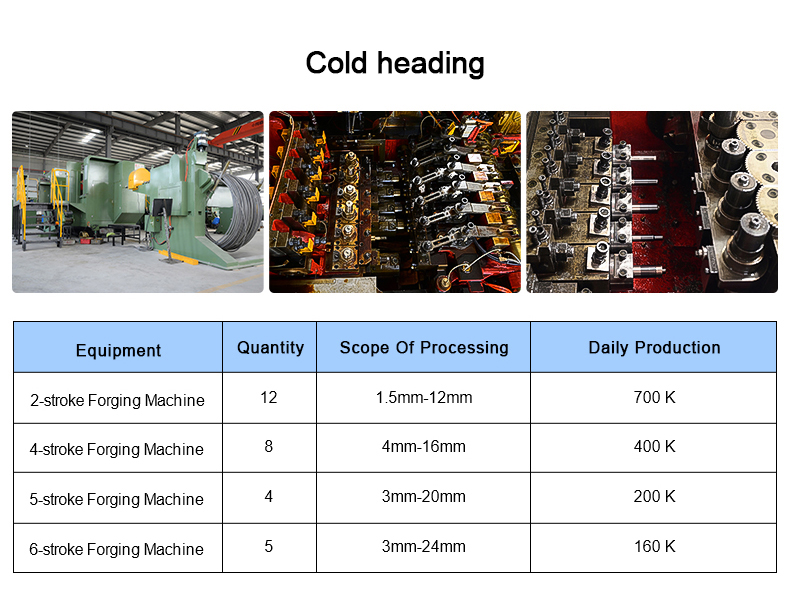
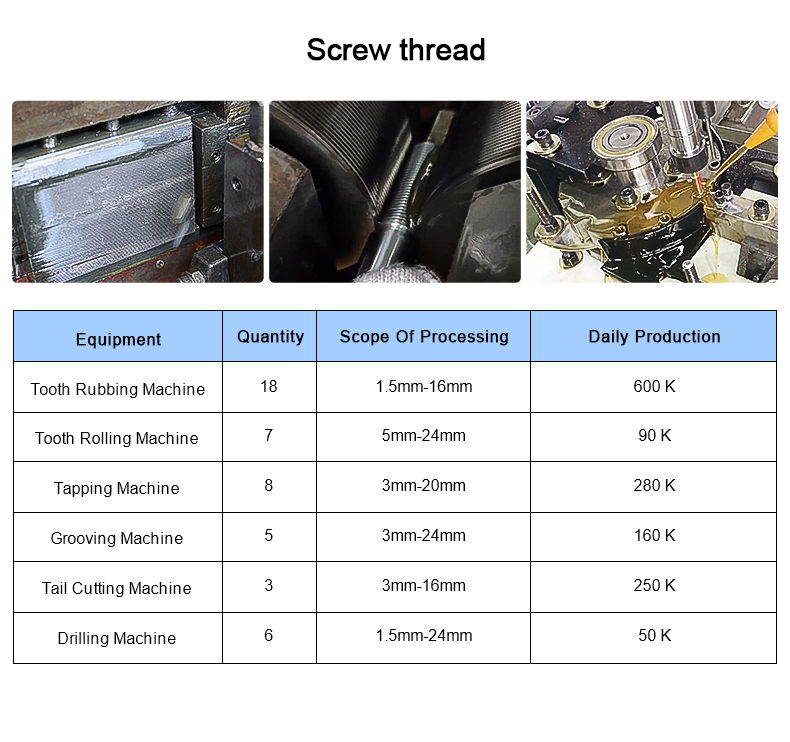
Copper-plated safety wire bolts are specialized fasteners designed for applications where vibration resistance and corrosion protection are critical. Here’s an overall description of their features and uses:
Key Features:
-
Material & Plating:
-
Typically made from carbon steel, stainless steel, or alloy steel for strength.
-
Copper-plated for enhanced corrosion resistance, electrical conductivity, and lubricity during installation.
-
-
Safety Wire Holes:
-
Feature pre-drilled holes (usually two) in the bolt head or shank to allow for safety wire (lock wire) installation.
-
The wire prevents loosening due to vibration or rotation.
- Safety wire bolt copper plated
-
-
Thread Type:
-
Often have fine threads for better tension control and vibration resistance.
-
Common thread standards include UNC, UNF, or metric.
-
-
Head Styles:
-
Available in hex head, clevis head, or drilled head designs depending on the application.
-
-
Standards & Grades:
-
Manufactured to meet ANSI, MS (Military Standard), NAS (National Aerospace Standard), or DIN specifications.
-
High-strength grades (e.g., Grade 5, Grade 8, or A286 for aerospace).
- Safety wire bolt copper plated
-
Applications:
-
Aerospace: Used in aircraft engines, landing gear, and structural components.
-
Military & Defense: Secure critical components in vehicles, weapons, and machinery.
-
Automotive & Racing: Prevent bolt loosening in high-vibration environments.
-
Marine & Industrial: Copper plating provides corrosion resistance in harsh conditions.
Installation Notes:
-
Safety wire must be threaded correctly (typically in a double-twist method) to prevent loosening.
-
Proper torque must be applied before wiring to avoid overloading the bolt.
These bolts are essential in industries where failure due to vibration or corrosion is not an option. Would you like details on specific standards or installation techniques?
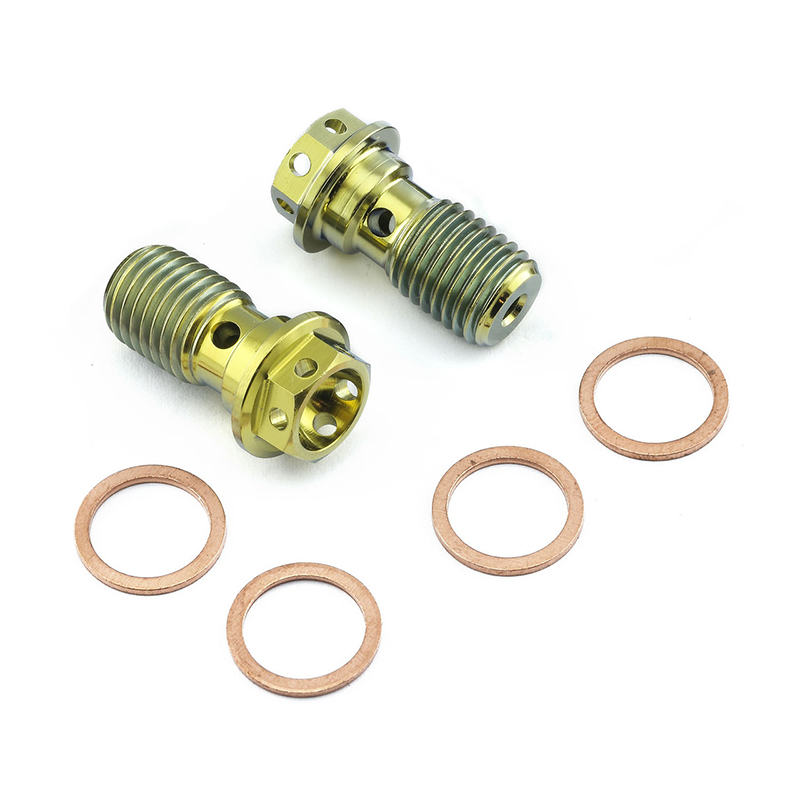

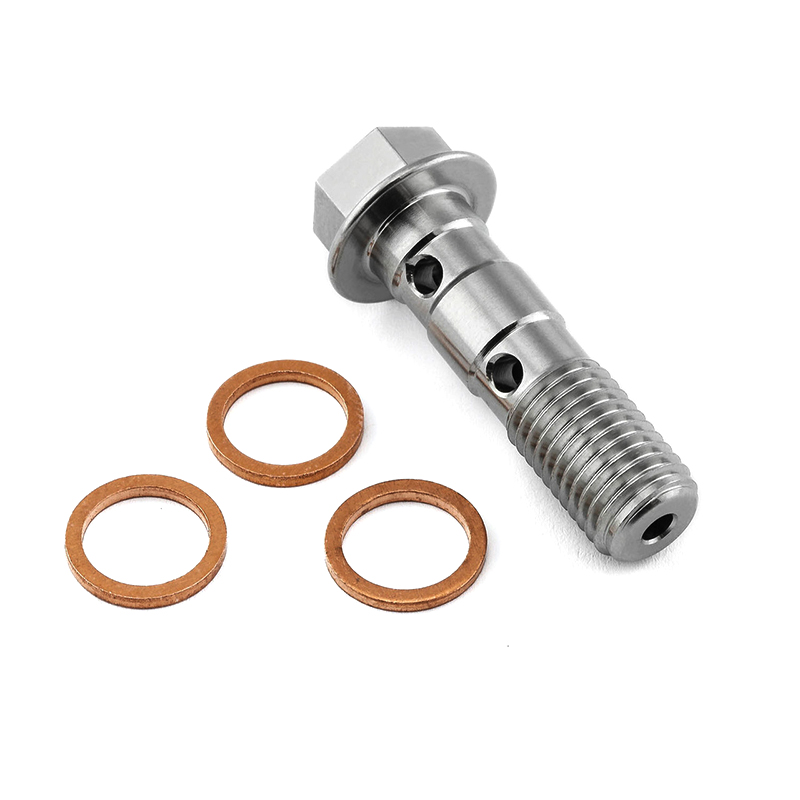
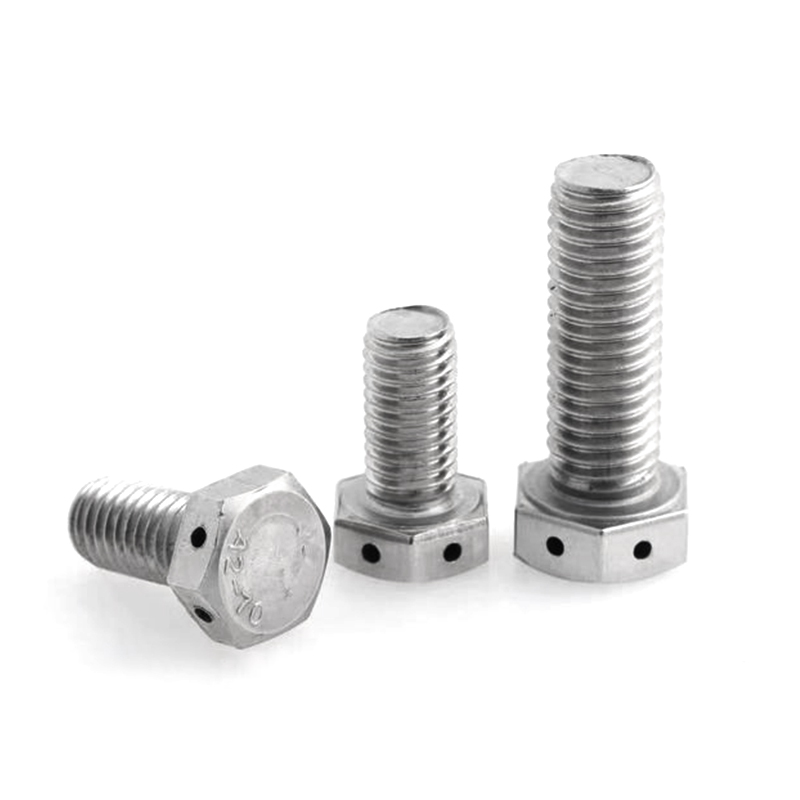
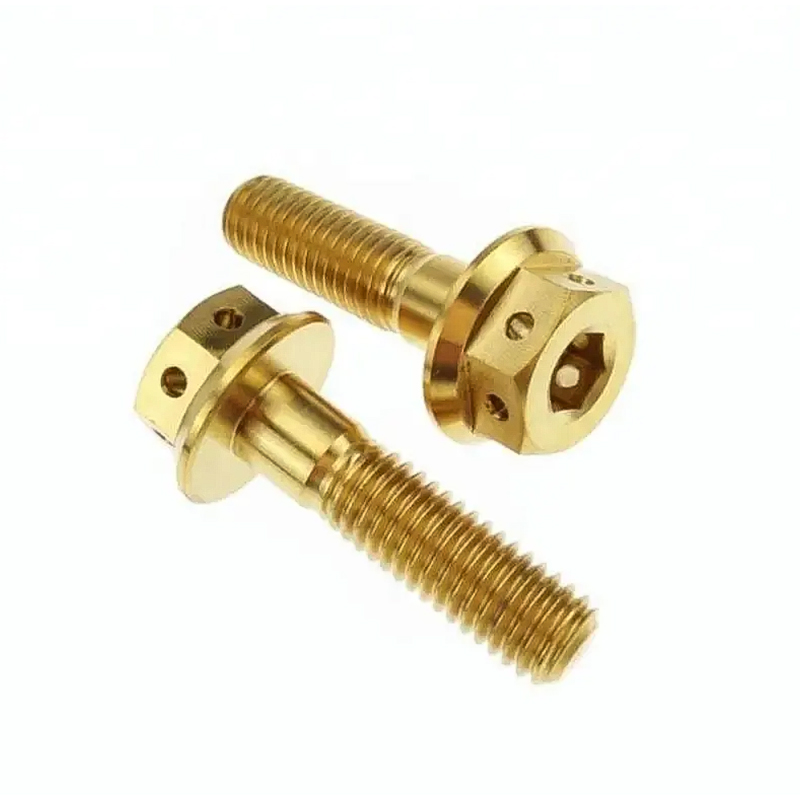
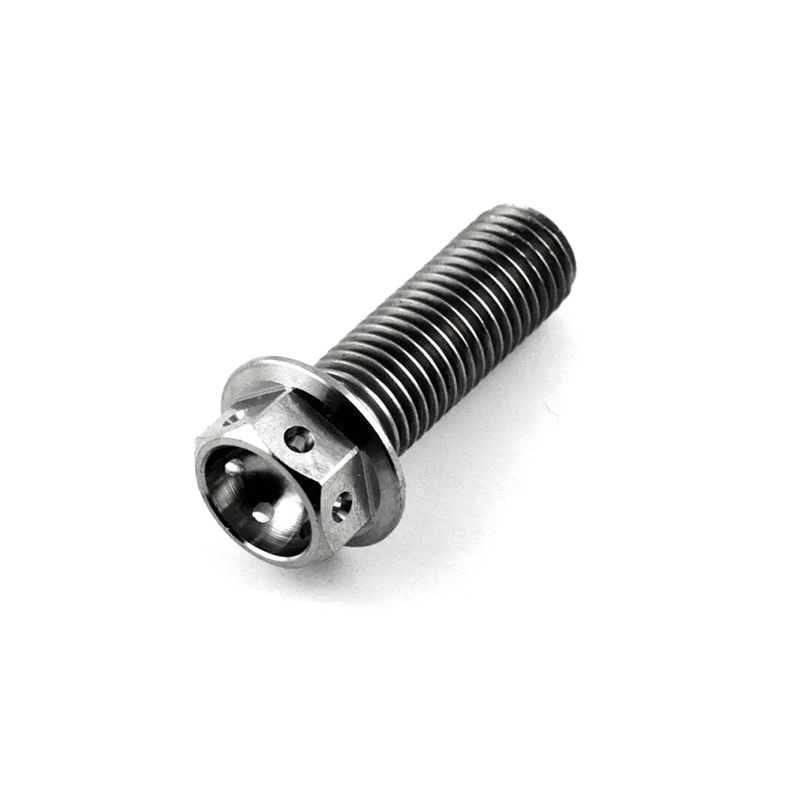

Reviews
There are no reviews yet.